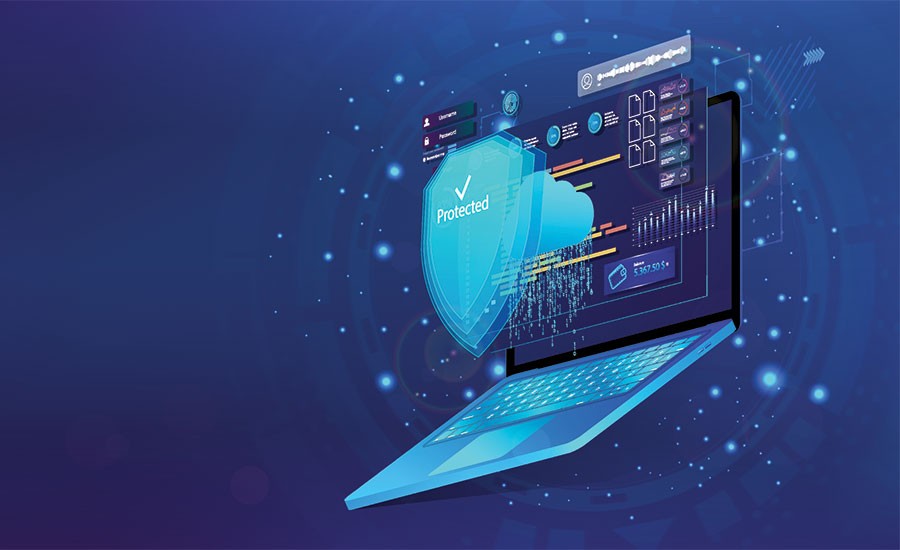
What Is A Threat Intelligence Platform? Capabilities, Benefits & More
Did you know that there is a cyberattack every 39 seconds?
Cybercrime continues to grow in frequency and its cost is expected to reach $10.5 trillion by 2025.
To combat cyber threats, potential losses of large volumes of data, ransomware requests and security breaches, implementing a threat intelligence platform is the solution for companies of all sizes.
We’ll analyze how threat intelligence platforms work, explain why your company needs one and introduce you to our robust platform with expansive capabilities — Analyst1.
Table of Contents
ToggleWhat Is Threat Intelligence?
Threat intelligence is the collection of information about possible, ongoing, or past malicious threats targeting your company or you as an individual.
It is used to identify risks and make decisions to manage the cyber threats.
Cyber intelligence includes details about the attackers’ techniques, tactics and tools they use, as well as specifics about the vulnerabilities within your system and/or apps.
When you understand what kind of cyberattacks are threatening you, you can take the necessary steps to prevent or mitigate them.
Threat Intelligence vs. Threat Hunting
Threat intelligence is often confused with threat hunting.
The primary difference between the two lies in their purpose.
While threat intelligence focuses on gathering and analyzing data about potential cyber threats, threat hunting focuses on the process of actively looking for possible threats and vulnerabilities within a company’s system and network.
Moreover, threat intelligence relies on tools such as threat intelligence platforms and threat intelligence feeds, while threat hunting uses log analysis and network monitoring to spot threats that other security tools may have missed.
4 Types Of Threat Intelligence
There are four main types of threat intelligence:
- Strategic threat intelligence: This type of threat intelligence can help you acquire a comprehensive threat overview, understand possible motifs of threat actors and discover their techniques. By offering a high-level view of cyber threats, strategic threat intelligence helps you devise a long-term strategy to keep your company and network safe.
- Tactical threat intelligence: Focused on immediate cyber threat identification, tactical threat intelligence allows you to identify specific threats and take appropriate action to mitigate the risks.
- Technical threat intelligence: This type of threat intelligence provides you with technical details about potential cyber threats, including threat actor techniques, and helps you understand how to respond to them.
- Operational threat intelligence: This type of threat intelligence analyzes past attacks and uses the insights to identify threat actors’ motifs, allowing you to respond to threats.
What Is A Threat Intelligence Platform?
A threat intelligence platform (TIP) is software or a set of tools you can use to collect, analyze and manage data about potential cyber threats.
The purpose of threat intel platforms is to provide you with information that will help you keep your company and network safe from cyberattacks, and also detect vulnerabilities within your system.
A threat intelligence platform can also provide you with insights regarding the tactics, techniques and procedures (TTPs) that malicious actors use to hurt your system.
The tools included within a threat intelligence platform vary depending on the platform; some of the most common features include:
- A user interface that enables cyber security analysts to monitor and manage data about potential threats
- Tools for collecting and processing data about possible threats from various sources, such as security forums, social media and blogs
- Feeds and application programming interfaces (APIs) that ensure access to real-time info about cyber threats
- Reporting tools that enable cyber security analysts to understand and share data
- The possibility of integration with other security tools, including security information and event management systems (SIEMs), security orchestration, automation, and response (SOAR) platforms and firewalls
- Tools for scoring the threat risks
Threat Intelligence Platform vs. Anti-Virus Software
If your company is already using anti-virus software, you may wonder if you still need a threat intelligence solution.
The answer is — yes, you do, and here’s why.
Anti-virus software and threat intelligence platforms have different purposes and functions.
When you use a computer, an anti-virus software runs in the background, ready to identify and quarantine/remove viruses, trojans, and other types of malware from your device or network.
A cyber threat intelligence platform isn’t installed on your computer. Instead, a platform can come from an external open-source or internal information source, including security information and event management (SIEM) and log management tools.
A threat intelligence platform includes tools that allow you access to broader and more complex functions than anti-virus software, such as the collection and analysis of new possible threats, old exploits, and insight into threat actors’ techniques.
While anti-virus software is focused on safeguarding a specific device by scanning files and the network to immediately remove malware, threat intelligence platforms like Analyst1 collect and analyze information about threats, then use the gathered data to create security strategies.
How Does Threat Intelligence Software Work?
To use a threat intelligence platform, you first need to make sure that the platform is set up properly. This means that you must:
- Connect it to a data source
- Configure the platform’s tools
- Set up user accounts and moderate access controls for threat analysts that will use your platform
Threat intelligence feeds are a common source of information for most threat intelligence platforms.
These feeds provide you with a constant influx of real-time information about possible cyber threats. For instance, popular open-source threat feeds include Google’s Safe Browsing and FBI’s InfraGard.
Aside from open sources, threat intelligence feeds also crawl the web to discover exploits and collect information about cyberattacks.
Once you connect your threat intelligence platform to a threat feed, your platform uses the feed’s input to collect and analyze data.
Thanks to these feeds, your platform is more effective against likely threats and updated with the latest information about cyber dangers.
Receiving threat intelligence feeds through your platform also speeds up the process of analyzing data.
5 Stages Of Threat Intelligence
Threat intelligence occurs in four stages:
- Collection: In this stage, data is gathered from multiple sources, including intelligence reports, security researchers, blogs, government agencies, social media and public information. With Analyst1, the process of collecting data is completely automated.
- Processing: Once you collect the data, it’s time to clean, filter and organize it. If there’s any irrelevant or duplicated content, it’s removed during this stage.
- Analysis: During the analysis stage, the platform identifies patterns that indicate potential threats. You get reports and alerts that provide you with a threat overview.
- Dissemination: Also known as the distribution stage, this is when stakeholders and security and IT teams get access to the analyzed data.
- Use: During the final stage, you can use threat intelligence to respond to identified cyber threats in a specific way, e.g., track them, set up certain security measures to protect your network from current and potential attacks, and more.
Why You Need Threat Intelligence Software
Considering the frequency of cyberattacks and the damage they can cause, using a threat intelligence platform is paramount for companies of all sizes.
Whether you’re a non-profit organization, a government agency, or anything in between, a cyber threat intelligence platform helps protect your business.
This is especially true for companies that operate in the financial or healthcare industries, where sensitive client information is a key concern.
Some of the key benefits of using a threat intelligence platform include:
- Increased awareness about cyber threats: Threat intelligence solutions allow you to quickly discover and analyze potential threats and protect your systems by implementing specific security rules and procedures.
- Improved protection: Threat intelligence allows you to take action against cybercrime by first identifying threats, then helping you deal with them by implementing appropriate security protocols.
- Data breach prevention: Since platforms check all types of threats, they keep your data safe from possible breaches by preventing suspicious IP addresses, domains and links from accessing your data.
- Streamlined security operations: Platforms, such as Analyst1 allow you to streamline and automate the process of collecting and analyzing information, which improves efficiency. At the same time, by allowing you to immediately respond to threats, threat intelligence platforms improve the efficiency of your security team.
- Cost-effectiveness: Considering that the cost of cybercrime is measured in trillions, threat intel software can save you money and protect your brand reputation.
How To Choose A Threat Intel Platform
When choosing a threat intelligence platform for your business, it’s important to evaluate several characteristics.
One of the most important factors to consider is the tools and features included with the platform, so you know what type of data the platform can gather and analyze. The security systems a platform packs is also a key factor.
For example, Analyst1 can create, assign and distribute tickets to your cybersecurity team, which helps streamline your cybercrime prevention process.
You can also combine Analyst1 with SIEM systems, SOAR platforms, and endpoint security solutions. Analyst1 brings the data to and from these tools, making it easier for you to understand the different ways data is represented in a mature system.
Another important thing to consider when selecting a threat intelligence platform is its flexibility.
If your requirements change over time (e.g., your business grows and your network expands), you’ll want a threat intelligence platform that easily adapts to changes.
Last but not least, consider how user-friendly the platform is. The easier a platform is to navigate, the faster you can analyze the data the platform provides you with.
Meet Analyst1: The Leading Threat Intelligence Platform
Analyst1 is an automated threat intelligence platform that allows you to collect and enrich threat intelligence.
The platform enables you to author, test and deploy measures across your prevention systems.
Analyst1 allows you to:
- Automate threat detection and identification
- Extract information to trace threat activity
- Gather information from multiple data sources to automate the enhancement of indicators
- Analyze the threats and identify their scope
- Identify what intrusion detection systems (IDS) and intrusion prevention systems (IPS) sensors are available as well as create and test sensor-specific rules and countermeasures
- Identify attribution trends to formulate actions and prioritize responses
- Streamline response time to resolve threats
- Create and assign countermeasures and distribute them to designated cybersecurity teams
- Educate team members on skills needed to identify malware and defend your network from malicious threats
How effective is Analyst1 against fighting cyber crime? This platform is the Cybersecurity and Infrastructure Security Agency’s (CISA) platform of choice — the organization in charge of protecting the country against cyber threats.
Analyst1 gives you access to a centralized location where you can gather, store and analyze threats. Unlike the majority of other threat intelligence platforms that gather data, but leave you to manually categorize it, Analyst1 automates the entire process.
You can use the platform to keep track of evidence, threat indicators, rules and sensors, as well as to measure the effectiveness of actions against threats.
Analyst1 allows threat analysts to quickly and easily determine which rules are giving results, enforce them and prioritize responses.
A Recap On Threat Intelligence Platforms
A threat intelligence platform is software system with a set of tools that allow you to gather terabytes of data about cyber threats from multiple sources, and also track vulnerabilities within your network.
Analyst1 is an automated threat intelligence platform that allows you to gather large amounts of data quickly, analyze threats and their scope, create action plans and even educate cyber security teams.
Aside from letting you automatically collect and analyze data, Analyst1 offers you the possibility to create an action plan, streamline the response time and prioritize responses.


